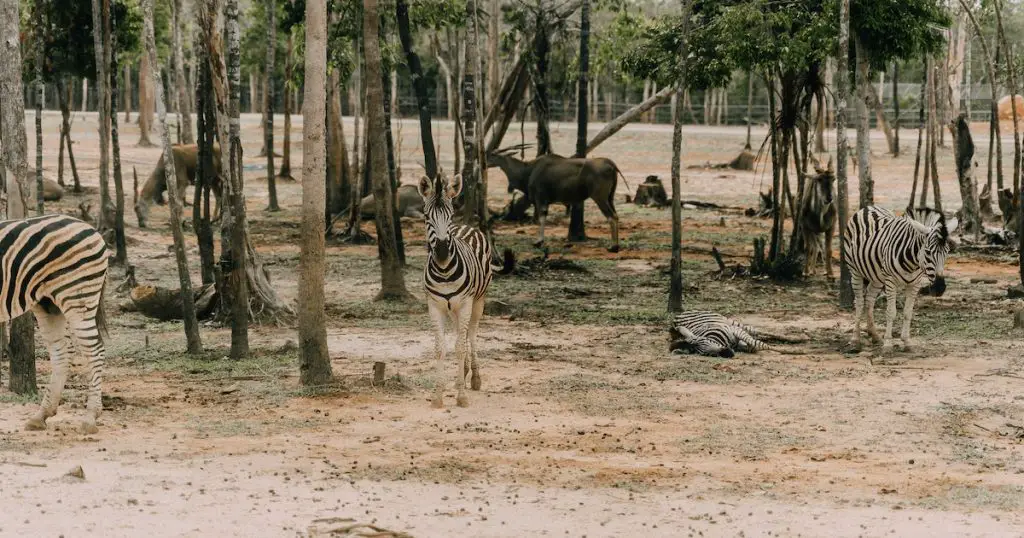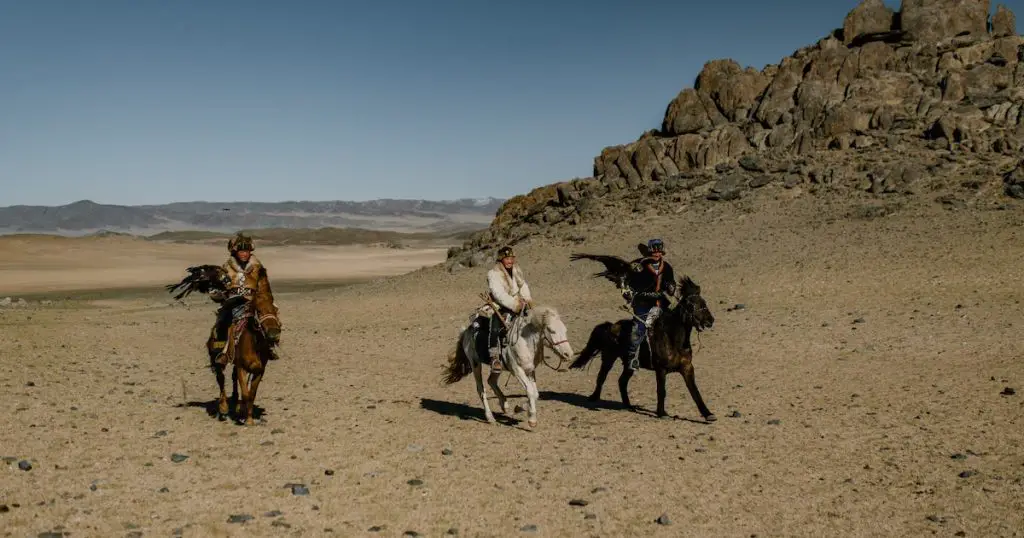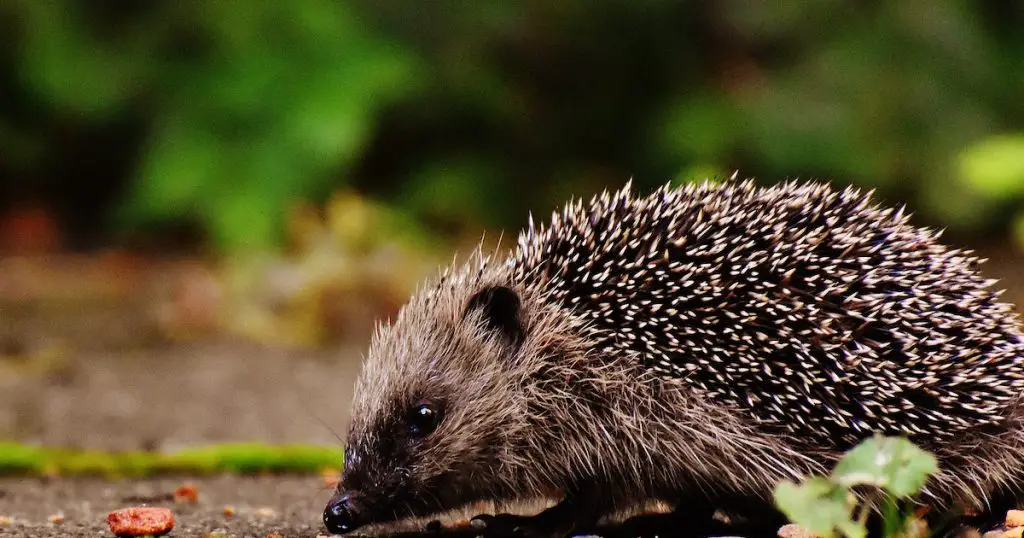Foraging is as old as humankind itself, a practice passed down through generations as people roamed the land in search of sustenance. Today, with the increasing allure of organic and natural foods, foraging has become more than just survival—it’s a return to our roots.

And if there’s one place that’s a treasure trove for budding and experienced foragers alike, it’s Prescott’s natural areas. This guide aims to give you comprehensive foraging guidelines for Prescott’s natural areas, ensuring you make the most of your experience while staying safe.
The Ethics of Foraging
In our pursuit of wild foods, it’s easy to forget that we’re entering nature’s domain, where balance and respect are paramount.
Foraging isn’t just about collecting; it’s about building a harmonious relationship with nature. From the sprawling grasslands to the dense woods, Prescott’s lands are not only our pantry but also home to countless species. Before diving into what and how to forage, it’s essential to understand why ethical foraging matters.
The Leave No Trace principles provide a compass for all outdoor activities, including foraging. It advocates for minimal human impact on the environment, urging foragers to only take what they will use and allow the area to regenerate.
Similarly, sustainable and responsible harvesting is non-negotiable. Over-harvesting can lead to decreased plant populations and potential extinction. A golden rule? Never take more than a third of what’s available. This ensures that plants have enough left to reproduce and thrive.
Prescott’s natural spaces are also teeming with wildlife. Always be conscious of the habitats you’re entering and the creatures that call them home. By adhering to these ethics, you ensure that the natural beauty and resources of Prescott remain for generations to come.
Understanding the Prescott Ecosystem
Prescott is a biodiverse haven. But to forage effectively and ethically, one must first understand its rich ecosystem.
The area boasts a varied terrain, from thick forests to sun-soaked meadows. Each landscape supports unique flora and fauna, which in turn shapes the foraging opportunities available. For instance, the dense woods might be brimming with mushrooms after a rain, while meadows can be a hotspot for wild berries in the summer.
The Prescott National Forest website offers a wealth of knowledge on the area’s ecosystems. They detail the various terrains and the species that inhabit them, making it a valuable resource for any forager.
However, foraging isn’t just about the ‘here and now.’ Understanding seasonal changes in Prescott is vital. Seasons dictate plant life cycles, and foragers must adapt accordingly. For instance, spring might be ideal for wild greens, while late summer and fall can be prime times for fruit and nut gathering. Being in tune with the rhythms of Prescott’s natural calendar ensures a successful foraging adventure.
Safety First
Nature is full of wonders, but it also has its perils. Foraging safely is paramount.
For starters, never consume anything unless you’re 100% certain of its identity. Some edible plants have toxic look-alikes, and mistakes can be fatal. There are numerous books and online resources dedicated to plant identification. Investing time in these can save you from potential dangers.
Wildlife encounters are another safety concern. Prescott is home to various species, some of which might not take kindly to human intrusion. Always be aware of your surroundings. If you spot wildlife, maintain a safe distance and avoid making sudden movements.
Another key guideline is understanding which plants can be harmful. Some plants, even if not consumed, can cause skin irritations or allergic reactions upon touch. Familiarize yourself with these plants to avoid unnecessary mishaps.
Basic Foraging Tools and Equipment
Heading into the wild unprepared can be a daunting experience. While nature provides the bounty, you’ll need a few essentials to make your foraging expedition a success.
- Basket or Bag: A sturdy basket is essential for collecting and transporting your finds. A basket allows air circulation, which can be especially useful if you’re collecting mushrooms.
- Knife or Scissors: Useful for cutting plants without damaging them. Always ensure they’re sharp to make clean cuts.
- Field Guide: A pocket-sized identification book can be a lifesaver. It helps in quickly distinguishing between edible and potentially harmful plants.
- Gloves: Protect your hands from thorns, insects, or plants that can cause irritations.
Edible Plants of Prescott
The natural areas of Prescott are a forager’s paradise, teeming with an array of edible plants that range from common to exotic.
One of the mainstays is the Dandelion. Often dismissed as a mere weed, every part of this plant is edible. The leaves make for a peppery addition to salads, while the roots, when roasted, serve as a coffee substitute.
Then there’s the Lamb’s Quarters, a green that’s often compared to spinach in taste and texture. Rich in nutrients, it’s a versatile addition to any dish. For a comprehensive list of edible plants, Eating the Southwest is a fantastic resource, detailing various plants native to the region.

Remember, while the bounty is plentiful, it’s crucial to forage responsibly. Always make sure you’re picking the right plant and not depleting an area completely.
Medicinal Plants and Herbs
Beyond edibles, Prescott’s natural areas are a reservoir of medicinal plants and herbs that have been used by indigenous peoples for centuries.
For instance, the Yarrow plant, with its delicate white flowers, is known for its wound-healing properties. When crushed, its leaves can be applied directly to cuts, helping with clotting and preventing infections.
Another gem is the Elderberry tree. While its berries are a delicious treat, they’re also packed with antiviral properties. Many swear by elderberry syrups and teas as a remedy for colds and flu. For those looking to delve deeper into the world of medicinal herbs, Herb Rally offers extensive information on the uses and preparations of various plants.
However, a word of caution: always consult with a healthcare professional before consuming or using any medicinal plants. What might be beneficial for one could be harmful to another.
Mushrooms
Prescott’s woodlands and meadows, especially after a good rainfall, become a haven for mushroom enthusiasts. Mushrooms are not only culinary treasures but also offer an exciting challenge for foragers due to their vast diversity and sometimes elusive nature.
One of the most sought-after varieties is the Morel. This honeycombed mushroom is not only a culinary delicacy but also a forager’s delight. When cooked, they offer a meaty texture and a rich, earthy flavor.
However, the world of mushrooms isn’t without its dangers. The Amanita, for instance, bears a striking resemblance to some edible varieties but is highly toxic. As the old saying goes, “There are old mushroom hunters and bold mushroom hunters, but there are no old, bold mushroom hunters.” Using resources like Mushroom Expert can be invaluable in ensuring safe and successful foraging.
Always remember to forage mushrooms with caution. It’s advisable to go with an experienced forager or mycologist, especially if you’re new to the practice.
Wild Fruits and Berries
The sun-drenched meadows and shadowy underbrush of Prescott’s natural areas provide a diverse range of wild fruits and berries. These sweet treats not only offer a burst of flavor but are also packed with vitamins and antioxidants.
Blackberries, with their tart-sweet flavor, are a common sight. Their thorny bushes may present a challenge, but the reward is well worth the effort. There’s also the Serviceberry, a lesser-known but equally delicious fruit that tastes somewhere between a blueberry and an almond when ripe.
When foraging for fruits and berries, it’s crucial to ensure they’re fully ripe. Some fruits can be slightly toxic or cause stomach upsets when consumed raw or unripe. Websites like Foraging Texas provide excellent guidelines for identifying and harvesting wild fruits safely.
Nuts and Seeds: Nature’s Crunchy Treats
The rustle of leaves underfoot and the crisp autumn air signals the perfect time for nut foraging in Prescott. These calorie-dense treasures are not only nutritious but also serve as a vital food source for local wildlife.
The Pinyon Pine, native to the area, produces small, flavorful nuts that have been a staple for Native American tribes for centuries. Another notable mention is the Acorn, produced by Oak trees. Though slightly bitter, they can be leached and ground into flour for various culinary uses.
While nuts provide a bountiful harvest, it’s essential to remember that they’re also a primary food source for many animals. As always, practice sustainable foraging. An excellent guideline is the “one for me, one for nature” principle, ensuring that enough is left behind for the ecosystem. Wild Food UK offers more insights into the world of wild nuts and seeds.
Wild Greens and Salad Staples
Why buy greens when nature offers a plethora of wild ones, each bursting with flavor and nutrients? Prescott’s landscapes are dotted with edible greens, from the humble dandelion to the peppery watercress found along streams.

Chickweed, often found in cooler shaded areas, is a tender green with a slightly nutty taste, perfect for salads. Another staple, Miner’s Lettuce, gets its name from the Gold Rush miners who consumed it to prevent scurvy due to its high vitamin C content.
While foraging for wild greens, ensure they haven’t been sprayed with pesticides or contaminated by runoff. It’s always best to forage away from roadsides or areas frequented by pets. For a deep dive into edible wild greens, Edible Wild Food is a treasure trove of information.
Roots, Tubers, and Underground Edibles
Delving beneath the soil reveals a world of hidden edibles, from tubers to roots. These underground treasures are nature’s pantries, packed with starches and flavors.
Jerusalem Artichokes or Sunchokes are native tubers with a nutty, sweet taste, resembling a cross between potatoes and water chestnuts. Another root vegetable, the Burdock root, is crunchy with a sweet and mild flavor, often used in Asian cuisines.
However, underground foraging requires a good understanding of the plant’s entire structure, as some edible plants have toxic roots. Plus, digging can be disruptive to the ecosystem, so it’s crucial to tread lightly. Always refill any holes and ensure the area looks undisturbed. For enthusiasts looking to explore this niche, Practical Self Reliance offers in-depth guides on harvesting and using various roots and tubers.
Foraging for Drinks
Nature’s beverage offerings go far beyond water. Many plants, fruits, and even fungi can be brewed, steeped, or fermented to create delicious and often healthful drinks.
Pine needles, for instance, can be steeped to produce a vitamin C-rich tea with a delightful woodsy flavor. The sumac’s red berries can be soaked in cold water to make a tangy, lemonade-like drink.
However, as with all foraging activities, ensure you’re using safe, non-toxic varieties. And remember, moderation is key. Some natural brews can be potent or have diuretic effects. If brewing is your passion, The Forager’s Harvest has a wealth of knowledge on wild beverages.
Foraging with Kids
Introducing children to foraging can be a magical experience. It’s not just about finding food but also about fostering a deep connection with nature and understanding where our food comes from.
Start with easily identifiable plants like dandelions or blackberries. Turning the foraging experience into a treasure hunt can make it fun and engaging for kids. Equip them with their little baskets and perhaps a magnifying glass to inspect their finds.
Always prioritize safety. Teach children never to consume anything without adult confirmation. Establish clear rules, like not wandering off or putting anything in their mouths without checking first. Websites like Nature’s Path offer fun and educational resources for young foragers.
Preserving Your Foraged Bounty
After a successful foraging trip, the next step is to ensure your harvest doesn’t go to waste. Preserving can amplify flavors and offer a taste of summer during colder months.
- Drying: Perfect for herbs and mushrooms. Once dried, they can be stored in airtight containers and used throughout the year.
- Canning: Berries and fruits can be turned into jams, jellies, or preserves.
- Freezing: Most berries and some greens can be frozen directly. However, blanching them briefly can help retain their color and texture.
- Pickling: From wild garlic buds to dandelion petals, many foraged items can be pickled for extended shelf life and a tangy twist.

While preserving, always ensure cleanliness to avoid contamination. Sterilizing jars and using high-quality preserving agents can make a difference in shelf life and safety. For a deeper dive into preservation techniques, Ball Fresh Preserving is a trusted source.
Respect Nature’s Bounty
Sustainability is at the heart of responsible foraging. Prescott’s natural areas are not just a source of food for humans but also home to diverse flora and fauna that rely on these resources.
- Limit your harvest: As tempting as it might be to pick every ripe berry or mushroom, always leave some behind. This ensures the plant’s survival and future harvests.
- Tread lightly: Stick to established trails when possible. Stepping on delicate plants or habitats can cause unintended harm.
- Knowledge is power: Understanding the lifecycle of plants can aid in sustainable foraging. For instance, harvesting roots is best done in late fall when the plant is dormant.
For those keen on deepening their understanding of sustainable foraging, The Association of Foragers promotes best practices and offers courses for both novices and experts.
Local Foraging Workshops and Classes
One of the best ways to enhance your foraging skills is by learning from experts. Prescott offers various workshops and classes throughout the year, catering to all skill levels.
Workshops often cover plant identification, ethical harvesting, and even culinary techniques to make the most of your foraged finds. Joining a local foraging community can also be beneficial, offering a platform to share experiences, and trade tips, and organize group excursions. Prescott Foragers Club is a reputable organization that regularly hosts events and workshops.
Legal Considerations and Permissions
While foraging is a rewarding activity, it’s essential to be aware of the legal implications. Not all areas are open to foraging, and some plants may be protected species.
- Stay informed: Regularly check regulations related to foraging in Prescott’s natural areas.
- Seek permissions: If foraging on private land, always get the landowner’s consent.
- Protect endangered species: Some plants might be on the brink of extinction or are protected due to their ecological importance. Familiarize yourself with these and avoid harvesting them.
The Arizona State Department of Natural Resources offers updated information on foraging regulations and protected species lists.
FAQs:
In this section, we will be delving into some of the most common inquiries and curiosities that surround our topic.
How can I ensure a plant or mushroom is safe to eat?
Always cross-reference with reputable field guides or websites. When in doubt, consult an expert or avoid consumption.
Can I forage in all parts of Prescott?
No, some areas may be off-limits due to conservation efforts or private ownership. Always check local regulations and seek permissions when necessary.
What’s the best season to forage in Prescott?
Each season offers unique foraging opportunities. Spring is ideal for greens and flowers, summer for berries, autumn for nuts and mushrooms, and winter for certain roots.
Conclusion
Foraging in Prescott’s natural areas is more than just a pastime; it’s a journey into the heart of nature. It allows us to connect with our surroundings, appreciate the subtle wonders, and sustainably harness the land’s bounty.
With the right knowledge, tools, and respect for nature, anyone can unlock the myriad of flavors and experiences awaiting in the wild. Here’s to many fruitful foraging adventures ahead!



Leave a Comment
You must be logged in to post a comment.